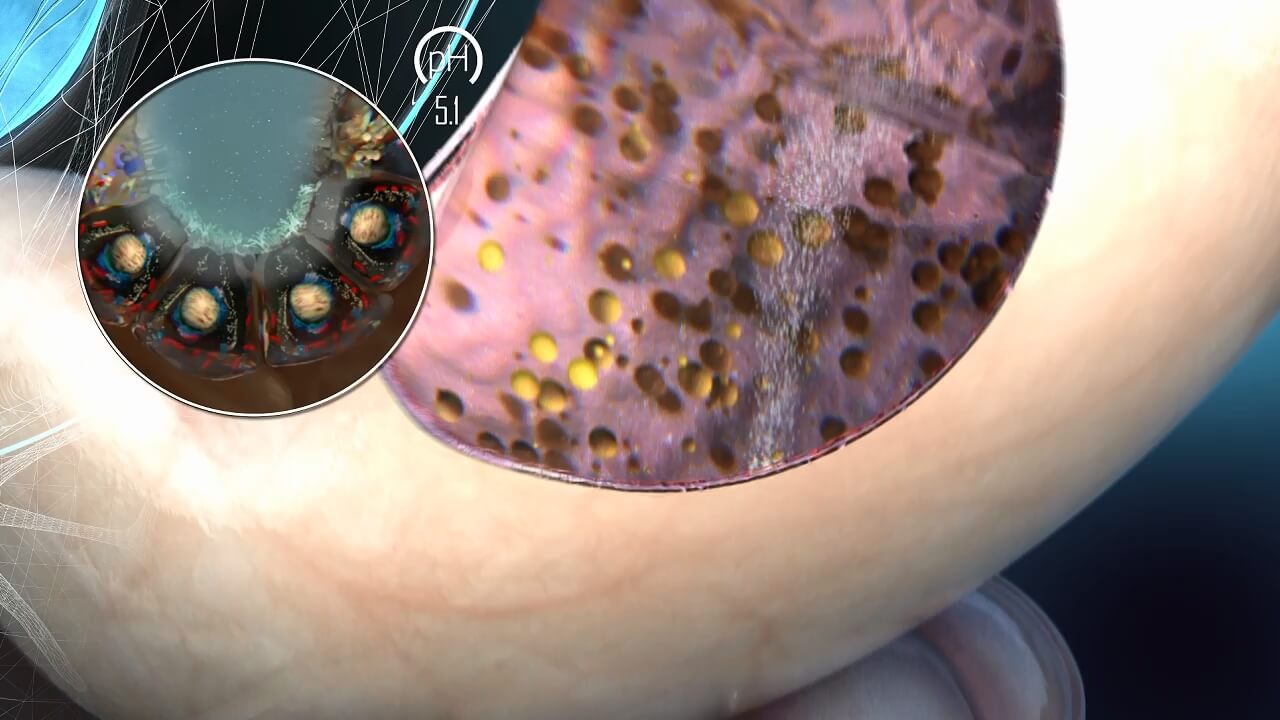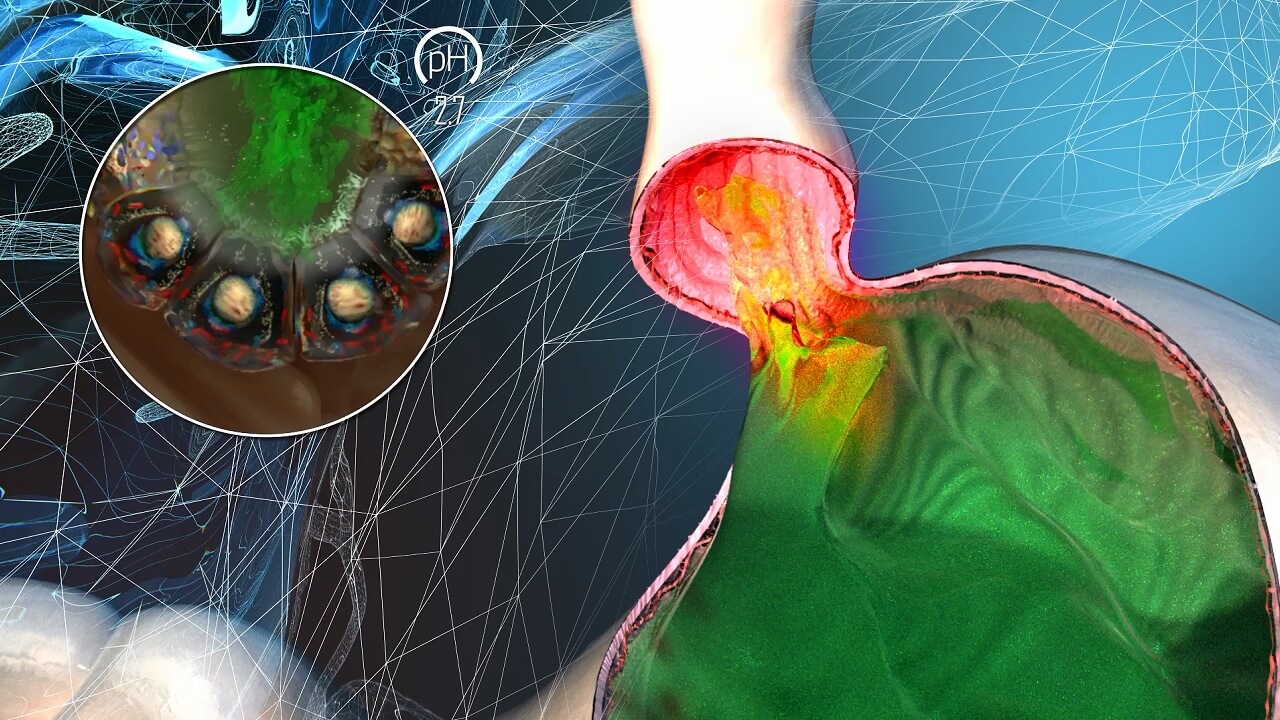In one of our projects, we created Rabeprazole MoA animation to show the benefits of this class of drugs.
About H. pylori
Helicobacter pylori was discovered in 1983 by a biologist and a clinician: Warren and Marshall. The association of chronic H. pylori infection with alterations in the gastric mucosal cell proliferation is recognized worldwide. Furthermore, it has some bioactive factors that may affect the parietal cells in the stomach, which is responsible for the production of hydrochloric acid, and enterochromaffin-like cells, which secrete somatostatin and gastrin.

Signs and symptoms
This infection is asymptomatic in general, and there are no specific clinical symptoms and signs dedicated to this illness. Common ones are:
- Vomiting
- Abdominal pain
- Nausea
- Diarrhoea
- Heartburn
- Bad breath
- Morning hunger
Disease pathophysiology
The ways of transmission are: from mouth to mouth (oral-to-oral) and fecal-to-oral (from stool to mouth) contact. H. pylori-associated chronic active gastritis may lead to gastric and duodenal ulcer disease, MALTomas, and gastric cancer in a susceptible host. A striking infiltration characterizes this type of gastritis with neutrophils, T and B lymphocytes, macrophages, and mast cells of the gastric epithelium and the underlying lamina propria. Mast cells are usually responsible for the immune response balance and may be important effector cells in the pathogenesis of gastritis.
Treatment tactics
Some of the medications (other than antibiotics) used in H. pylori infection are the following:
- Antidiarrheals (e.g., Bismuth subsalicylate)
- Proton pump inhibitors (e.g., Rabeprazole, lansoprazole, omeprazole)
- H2-receptor blockers (e.g., Ranitidine, famotidine)

Rabeprazole MoA animation
Rabeprazole MoA animation was created to display the mechanism of action of a proton pump inhibitor – rabeprazole in case of H. pylori-associated gastric inflammation. Helicobacter pylori produce urease and catalase. Urease cleaves urea, contained in gastric juice, which increases the pH of the immediate environment of the microbe and protects it from the bactericidal action of the acidic environment of the stomach.
The most crucial factor of hypersecretion of hydrochloric acid in the stomach is the direct influence of Helicobacter pylori on the secretory process by excessive alkalization of the antral part of the stomach by the products of the urea hydrolysis by Helicobacter pylori. The consequence of excess alkalization is hypergastrinemia, which leads to hyperproduction of hydrochloric acid. Rabeprazole suppresses the gastric acid secretion by inhibiting the gastric H+, K+ ATPase in the gastric parietal cells. As this enzyme is known as the acid (proton) pump, rabeprazole has been given the name as the proton-pump inhibitor. Rabeprazole blocks the last step of gastric acid secretion.
Nanobot Medical Animation Studio develops highly innovative digital graphics to depict actual and conceptual technologies by a synergistic fusion of art and science since 2007. Nanobot provides visually engaging digital solutions like scientific VR/AR/MR, 3D medical animations, illustrations for innovative marketing and training | education strategies to the pharmaceutical and biotech industry. We are devoted entirely to medical and scientific imaging. Our creative production team and experienced medical experts help us produce visually and scientifically accurate media material to make any project a huge success.
We are a professional medical animation and interactive design company whose team has a long history of experience in the creation of latter-day colorful photo-realistic animated or static images. Our client ranges from the Medical Device, Pharmaceutical and Biotechnology Industry, as well as Educational Institutes, Medical Marketing Companies, and Healthcare Agencies Globally.


